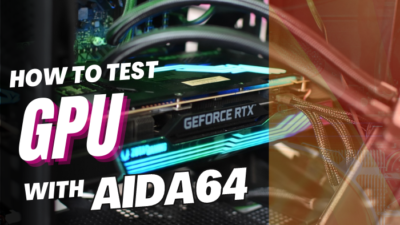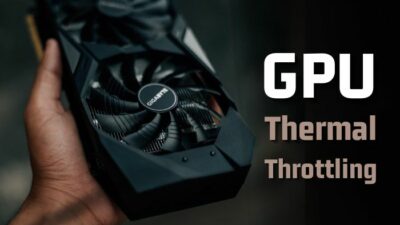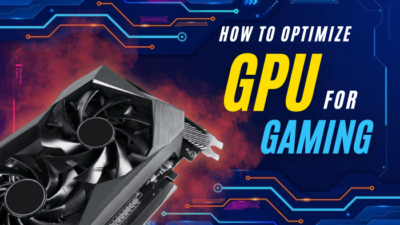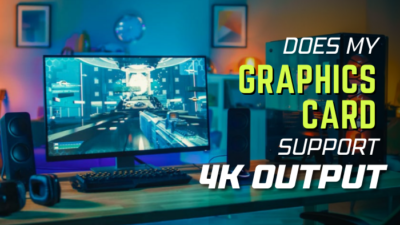When you buy a new GPU, you may notice a metallic plate on the back of the card. Those are called GPU backplates.
Are you wondering why your graphics card has a backplate, and what is the benefit of having it?
Then tag along. In this article, I will discuss the backplates of the graphics card and cover everything related to it.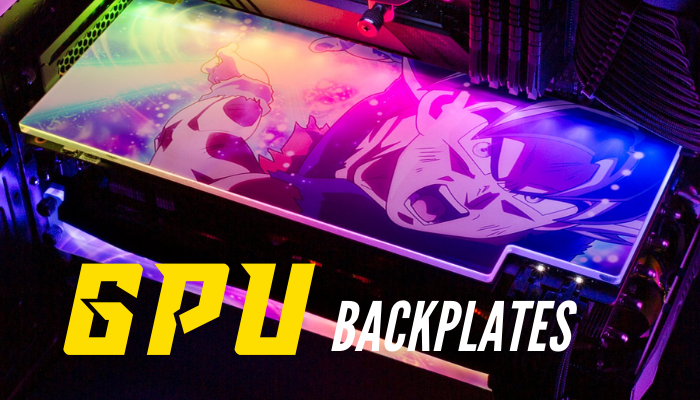
So, without ado, let’s begin.
What is a GPU Backplate for?
Generally, a GPU backplate is a flat plate placed on the back of a graphics processing unit. It’s mainly used for aesthetic purposes to improve the GPU’s appearance. Plus, It adds extra structural and protective support to the card so that it doesn’t physically get damaged.
Mostly, it is made of stained steel or plastic. But you may also find aluminum and acrylic backplates on the market.
Most users use the backplate on the GPU to improve the card’s overall aesthetics. It really gives the card a more streamlined and polished look.
With the RGB lighting, you can customize the designs on the backplate. I use the Star Wars Villains RGB Backplate on my graphics card. It looks really cool.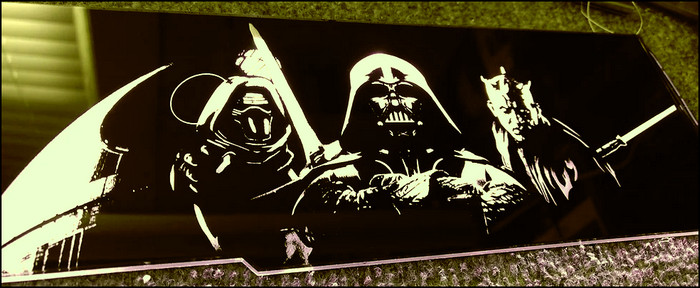
Moreover, you get an extra protective measure when you use a backplate on the graphics card. It shields the GPU from any accidental damage during installation or maintenance.
Some backplates have a uniform airflow, which improves the GPU’s cooling performance.
So, overall, you can say a backplate provides quite an excellent service to the GPU.
ASUS ROG Strix GPU Backplate ($50 – $80), EVGA PowerLink Backplate ($20 – $30), EKWB Vector Backplate ($30 – $40), Thermaltake Pacific V-GTX 1080Ti Plus Backplate ($60 – $80), Phanteks Glacier Backplate ($30 – $50), etc. are some examples of GPU backplate.
Same as GPU, your CPU has a backplate. Mostly they are attached to the motherboard. If you want to remove it and don’t want to damage your motherboard, check out our awesome guide to learn how to remove the CPU backplate safely.
Does a Backplate Help the GPU?
In short, yes. Backplate does help a graphics card. But the usefulness of the tool is pretty limited. It provides additional protection to the GPU, adds aesthetics, and sometimes helps to dissipate heat from the graphics card, so the cooling performance of the GPU increases.
As you know, the hardware components of the computer are pretty sensitive. A small amount of dust is enough to damage the graphics card. A backplate can offer additional defense to the card from dust.
Not only dust, but also from any physical damage such as bending or flexing due to pressure from other components.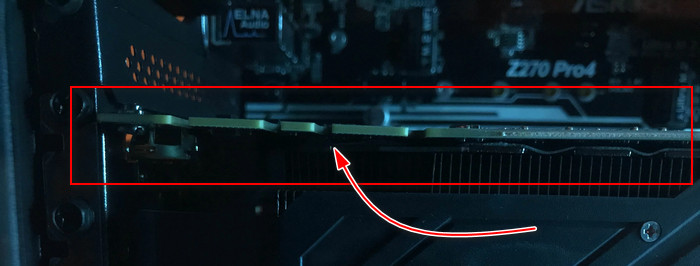
Backplates help the GPU maintain integrity since most heavier and larger graphics cards are prone to sagging. Don’t worry. It is possible to fix the GPU sag issue.
Besides, you must admit that backplates enhance the graphics card’s appearance and give the GPU a sleek and professional look. If you are a gamer or an enthusiast like me, I know how much you value the system’s appearance.
I have spent a large amount of money on a custom GPU backplate.
Furthermore, the backplate can help dispel the heat from the GPU. But, its effect on cooling is minimal, depending on the design and material used to make it.
However, occasionally it can act as a heatsink by providing a larger surface area for airflow.
Are you worried about whether the backplates of the graphics card are safe? For your assurance, they are. And they do a pretty good job of protecting the GPU from any physical damage.
Though they do a pretty good job of protecting the GPU, some dust can still go in. And you should clean the dust from your graphics card once in a while.
Custom Vs. Regular GPU Backplates: Which One is Better?
Both the custom and regular graphics card backplates are safe and better. Basically, it’s up to you which one you prefer. If you are tight on budget and don’t care much about aesthetics, a regular backplate will be ok. If you want to add personal touch and design, go for a custom one.
Are you confused about which one you should go for? Hopefully, a quick definition and their advantages and disadvantages will help you decide.
Here are brief definitions and advantages & disadvantages of regular & custom GPU backplates:
Regular GPU Backplate
A regular GPU backplate is the typical backplate that comes with your graphics card. It’s mainly designed to fit the specific model of your GPU.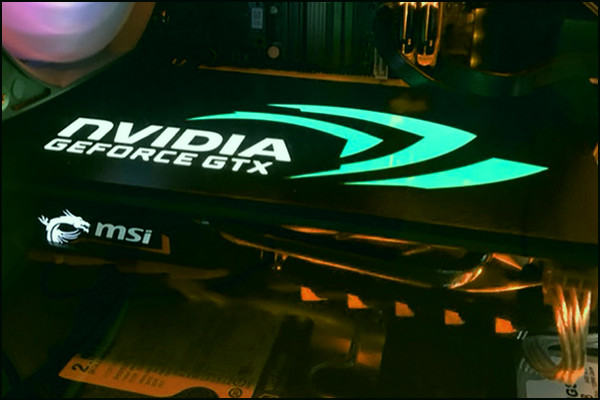
Though the regular backplates are good at providing good protection, they seem plain and unattractive. You won’t find any additional features or aesthetic appeal with a regular backplate. Since it comes with a GPU, you won’t have to spend any money on this.
Custom GPU Backplate
On the other hand, a custom backplate is a special one that is particularly made for your GPU and comes with additional customization possibilities. With this type of backplate, you can make the modification as you like.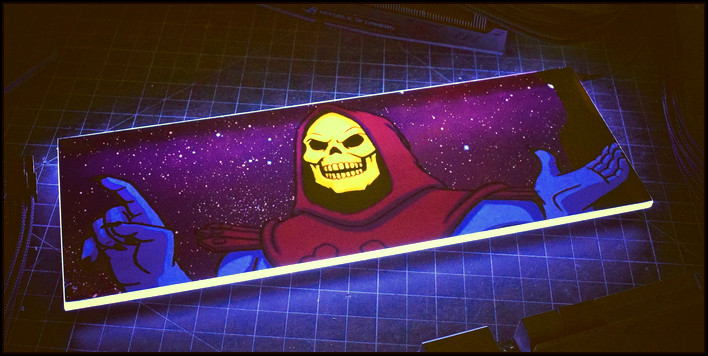
You can even have it made of different materials, such as aluminum or acrylic. Plus, you can add any design, logo, text, or RGB lighting to increase the aesthetic appeal of the plate.
Though there is a slight difference between RGB and ARGB, you can use ARGB in place of RGB lighting if you want.
But, the main disadvantage is that they can be expensive since you are custom-building the backplate. Moreover, you can find it a bit difficult to fit in the GPU if you add the LED feature, which requires wiring and power connections.
Even so, a custom-built backplate will be worth every penny if you want to showcase your design to your friends and make it pleasant for the eye.
I have discussed both sides. Now you make the decision about which one is better and which you want to go for.
Is a GPU Backplate Worth It?
Based on some factors, a backplate will be worth it for your graphics card. If you want to provide your GPU’s PCB with good protection and give the backplate a clean & sleek look, and money is not an issue, a GPU backplate will be a worthwhile investment for you.
The backplates’ primary benefit is providing an extra layer of protection to the back of the GPU. It’s necessary if you want to prevent any damage to your graphics card from accidental impacts, scratches, or other types of physical harm.
Moreover, backplates improve the airflow around the card. And because of that, thermal performance and system stability increase, and the risk of experiencing overheating issues decrease.
Nonetheless, you have to spend some money to get a custom backplate. The benefit of the custom backplate is you can add aesthetic appeal to your GPU, which will improve the appearance of your computer system.
So, a GPU backplate is worth buying if you are not afraid to spend money and want to experience the other advantages.
Besides GPU, other hardware components also can have a backplate. Read to find out whether a CPU Cooler needs a backplate.
FAQs
Do GPU Backplates get hot?
Yes, since the backplate stays on the back of the graphics card core, it can get pretty hot. But that kind of heat won’t give you an instant burn.
What material is best for the GPU backplate?
The best material for the GPU backplate is acrylic. Not only is it the easiest material to work with, but also you can get your desired color without requiring any painting.
Do GPU backplates affect temps?
Yes, the backplates of the graphics card affect the temps, but not by much. The temperature can go up and down around 1 to 2 degrees Celsius. Most of the time, you may not feel or notice the difference.
Final Thought
The backplates provide an excellent service to the graphics card. You won’t face any issues if you don’t have any regular or custom plate on the back of the GPU.
But that doesn’t mean you shouldn’t use it. You probably heard the saying that something is better than nothing. So, keep using one.
I hope you have got all the answers related to GPU backplates in this article. Comment below if you have any queries.
Peace!

